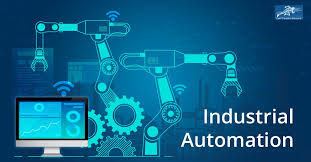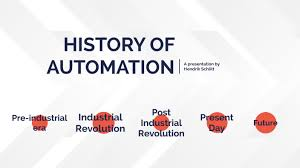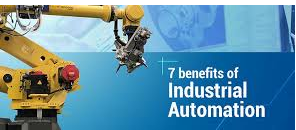

Guide to Industrial Automation
Catalog
Definition of Industrial AutomationDevelopment History:The Benefits of Industrial Automation:Frequently Asked Questions:Definition of Industrial Automation
Industrial automation refers to the umbrella term for machinery or production processes that accomplish tasks related to measurement, manipulation, and information processing for control purposes, aligning with predefined objectives, without requiring direct human involvement. The field of automation technology involves the investigation and development of approaches and techniques for automating these processes. It is a comprehensive technology that encompasses various domains such as mechanical engineering, microelectronics, computing, and machine vision. The Industrial Revolution acted as a catalyst for the birth of automation technology, which has since thrived due to the demands of the revolution. Moreover, automation technology has played a significant role in propelling the progress across various sectors. Currently, it is widely implemented in areas including mechanical engineering, electrical systems, construction, transportation, and information technology, becoming the primary avenue for boosting labor productivity.


Definition of Industrial Automation
Development History:
1. 1940s-1960s
Drivers of Demand: The push for market competition, efficient resource use, decreased physical labor, enhanced product quality, and the need for mass production capabilities. **Key Characteristics**: This era was dominated by individual machine automation, with the introduction and spread of various automated processing machines. **Milestones and Products**: Hardware-based numerical control systems and numerical control (NC) machinery.
2. Mid-1960s-Early 1970s
Drivers of Demand: Heightened market rivalry, the demand for frequent product innovation, superior product quality, and the need to accommodate large to medium-scale production volumes, along with a reduction in labor intensity. **Key Characteristics**: This period was defined by the advent of automated production lines. Building on single machine automation, a variety of integrated machine tools and assembly lines were introduced. Software-based numerical control systems were developed and implemented in machinery, and software like CAD and CAM started being utilized in actual engineering design and manufacturing processes. The hardware processing equipment of this stage was ideal for large to medium-scale production and processing. **Milestones and Products**: Automated assembly lines for operations such as drilling, boring, and milling.
3. Mid-1970s-Present
Drivers of Demand: Shifts in the market have exacerbated the challenges associated with producing a variety of products in small to medium batches, necessitating a more comprehensive and in-depth development of automation technology, and the integration of various related technologies to maximize overall performance. **Key Characteristics**: Since the early 1970s, when the concept of CIM (Computer Integrated Manufacturing) was introduced by American scholars, the automation field has seen substantial transformations. The main features include: CIM's gradual acceptance as a philosophy and approach; CIM as a set of technologies for integration, consolidating disparate and standalone unit automation technologies into an optimized system. The philosophy involves strategic analysis and overcoming of existing "bottlenecks" by enterprises to continuously enhance their capabilities and competitiveness; the technologies for integration generally include data acquisition, distribution, and sharing; networking and communication; shop floor equipment control; and standards for computer hardware and software. Concurrently, Concurrent Engineering, as a business philosophy and work model, has been applied in the automation field since the late 1980s and will further facilitate the integration of unit automation technologies. **Milestones and Products**: CIM factories, Flexible Manufacturing Systems (FMS).


Development History
The Benefits of Industrial Automation:
1. Boosted Manufacturing Output: Machinery operating autonomously can function non-stop, markedly enhancing manufacturing velocity and yield.
2. Decreased Workforce Expenses: Diminishing dependence on manual tasks leads to reduced labor expenses, particularly for those that are physically demanding or repetitive.
3. Superior Product Standards: Uniform and precise task execution by automation minimizes human mistakes, thereby enhancing product uniformity and excellence.
4. Flexibility and Responsiveness Upgraded: Automated manufacturing systems can swiftly modify to fit the production of various items, improving market change adaptability.
5. Advanced Safety Measures: Automation diminishes employee exposure to dangerous settings, curtailing the likelihood of occupational injuries.
6. Streamlined Resource Management: Automated processes optimize the use of materials and energy, curtailing waste.
7. Complex Task Facilitation: Automated technologies are capable of executing intricate or nuanced tasks that are challenging for humans.
8. Production Volume Amplification: Automation renders extensive production more practical and cost-effective, assisting companies in growing their market presence.
9. Data Acquisition and Interpretation: Automated systems gather substantial data throughout manufacturing, offering insights for process refinement and strategic decision-making.
10. Precision in Iterative Operations: Automated machinery sustains a high level of accuracy and uniformity in repetitive operations.
11. Diminished Human Variability: Automation lessens the variability introduced by human elements in production, such as mood swings and exhaustion, thus bolstering manufacturing reliability.
12. Innovation Acceleration: Automation spurs the creation of innovative technologies and methodologies, fostering advancements across the manufacturing sector.
13. Global Competitive Edge: By enhancing productivity and lowering expenses, automation aids companies in gaining a competitive edge internationally.
14. Sustainability Advancement: Automation supports more eco-friendly and sustainable manufacturing practices by improving resource efficiency and waste reduction.
15. Career Fulfillment Enhancement: Automation frees employees from tedious tasks, enabling them to partake in more inventive and challenging work, thus elevating job satisfaction.
The advantages of industrial automation solidify its role as a critical component of contemporary manufacturing, with ongoing technological progress leading to expanding benefits.


The Benefits of Industrial Automation
Frequently Asked Questions:
1. What are the four categories of industrial automation?
The spectrum of industrial automation encompasses fixed, programmable, flexible, and integrated types, which assist businesses in pinpointing the most appropriate systems for their unique requirements.
2. What constitutes the foundation of industrial automation?
Industrial automation involves the employment of control systems such as machines, actuators, sensors, processors, and networks to execute tasks, aiming to automate the production process. The genesis of industrial automation can be traced back to the advent of simple conveyor belts that moved parts through assembly lines.
3. What distinguishes PLC from industrial automation?
While both PLCs and industrial PCs are integral to industrial automation, PLCs are suited for smaller, specific tasks due to their durability, cost-efficiency, and security. In contrast, industrial PCs are more adept at handling complex applications that demand extensive computing and storage capabilities.
4. Which course is most suitable for industrial automation?
Key courses in automation include PGDIA (Post Graduate Diploma in Industrial Automation), CAE (Certified Automation Engineer), CAP (Certified Automation Professional), ADIA (Advanced Diploma in Industrial Automation), Siemens TIA Portal, and Schneider Electric M580 Series, all of which are pivotal for factory automation.
5. What represents the pinnacle of industrial automation?
The ERP (Enterprise Resource Planning) level represents the apex of the industrial automation hierarchy, concentrating on overall business management and coordination, which includes aspects like supply chain management, production planning, customer and market analysis, finance, human resources, and sales.
6. What is the optimal degree for a career in industrial automation?
Begin with a bachelor's degree in engineering, ideally in electrical, mechanical, computer, or automation engineering, as this education lays the groundwork for the technical knowledge essential for designing and implementing automated systems.
7. Which industry is the most automated?
The manufacturing sector exemplifies the impact of automation on the global scale. It encompasses not only the processes of the automotive and consumer goods industries but also extends to the aerospace, defense, and medical sectors.
Related Article
AI Innovations in Electrical Automation
Key Considerations for Selecting Industrial Automation Equipment
This article is from JMChip Electronics,which cooperates with manufacturers and offer electronic components, semiconductors, antennas, capacitors, connectors, diodes,transistors, lCs.and resistors. For more product information, please go to the website to get it.
Subscribe to JMChip Electronics !



















